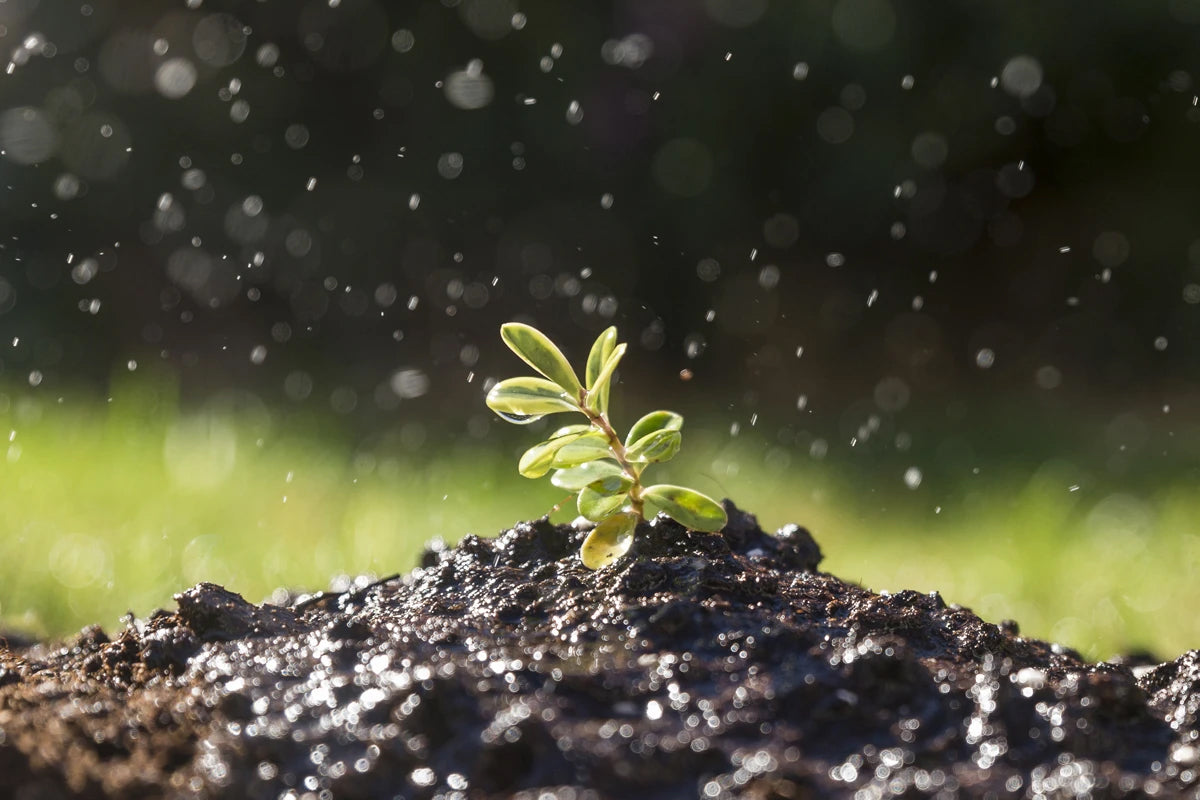Water supports all of the plants’ bioprocesses and systems. The moisture level in your garden soil will affect the growth of your plants, especially if the climate is hot and dry. Dehydration could weaken plant health that’s why it is so important to check the soil for visible signs of dryness.
Contents []
Checking for soil moisture may sound simple enough but there are imperceptible signs that your plants need immediate hydration. In this guide, we are outlining ways of checking for soil moisture:
Visual Observation
Perhaps the simplest way to check if your garden soil is in dire need of hydration is by looking at the ground. If the soil appears dry, light-colored and compact then it means you have to water the soil more.
Do note, however, that some soil types are light in appearance regardless if they are moist or not. Our advice is to familiarize yourself with different soil types and get to know the kind of soil you have in your garden.
If your garden soil looks muddy, squishy or mossy then it is a sign that the ground is waterlogged. Although mossy soils are a good environment for growth, the risk of root rot is too great for some plants. If such is the case with your garden soil, consider installing an irrigation system to draw excess water away from your plants.

Hand Feel
Checking the soil moisture beyond visual inspection involves digging into the soil using a hand trowel or a sharp spade. You want to slice straight down into the ground and dig down to 2 feet deep. Make another slice, about an inch in front of the first slice then with your hands, grab the soil slice you just made. Lay the soil slice on a piece of white paper or fabric then check the dark areas of the soil. If the soil slice is light, it is dry, if it is dark, the soil is moist. You could use a ruler to measure just how far down the moist layer reaches.
Another way to check the soil by feel is to get a handful of soil. Give the soil a squeeze to check for moistness. If you squeeze and the soil sticks together then it is moist. But if the soil crumbles or it remains in a loose pile as you squeeze then the ground needs more water. Now drop the soil and brush the soil off your hands. If your palm looks clean then the soil is extremely dry.
Get a Soil Moisture Probe
Just insert the probe into the soil and read the results. It should not take long to check the moisture level, about a few seconds if you are using a digital probe. If you are using a traditional scale probe then check the arrow move and stop at a specific number on the scale indicator.
Checking a large expanse of space means you have to check the soil moisture using the probe in various areas of your outdoor space. You’ll have to spread out within the area to get a general assessment of your soil’s moisture level.
Just to make sure your soil is in tiptop shape, always check for moisture if the soil appears dry or too wet. Install an irrigation system so your soil remains hydrated at all times. Be sure to keep the moisture level at level 5 because a vast variety of plants could grow and thrive at this level. If the probe reads a number that’s lower than 5 then water your soil.
Apart from a soil moisture probe, you could also use tensiometers and electrical resistance blocks to determine the moisture in the soil. These tools are often used for agricultural applications but they could be used for a small garden as well.
A Time Domain Reflectometry or TDR is also used to check for soil moisture but the method is on the pricey side. However, the results are incredibly accurate. If you are using this tool, remember that the sensor will require regular recalibration. The data is also difficult to interpret for most growers.

The Benefits of Checking and Monitoring Soil Moisture
- Checking the soil moisture is important because water serves as a solvent and carrier of nutrients that are vital for plant growth. The moisture in the soil is so important in agriculture that the yield of a crop depends on the amount of water available rather than the deficiency of food nutrients.
- Water regulates soil temperature and it promotes healthy soil. It also supports the water requirements of the billions of microorganisms that live in your garden soil. Water also helps in the biological and chemical processes of the soil itself, allowing the soil to support plant and animal life.
- In addition, water acts as a nutrient itself. In fact, water is one of the main building blocks of plant growth. It is also an essential part of photosynthesis that allows plants to harness sunlight to create their food.
- It is critical to monitor soil moisture early in the season or during the growing season to maximize crop production. For most growers, simple visual observation and hand feel are enough to check for soil moisture. But for people who grow crops for a living, using agricultural tools is the better strategy. However, some of these tools are either expensive or will require training for proper application.
Tune in for more gardening tips by subscribing to our weekly newsletter today. Get the freshest gardening tips and helpful resources straight to your inbox by signing up to our mailing list right now.



